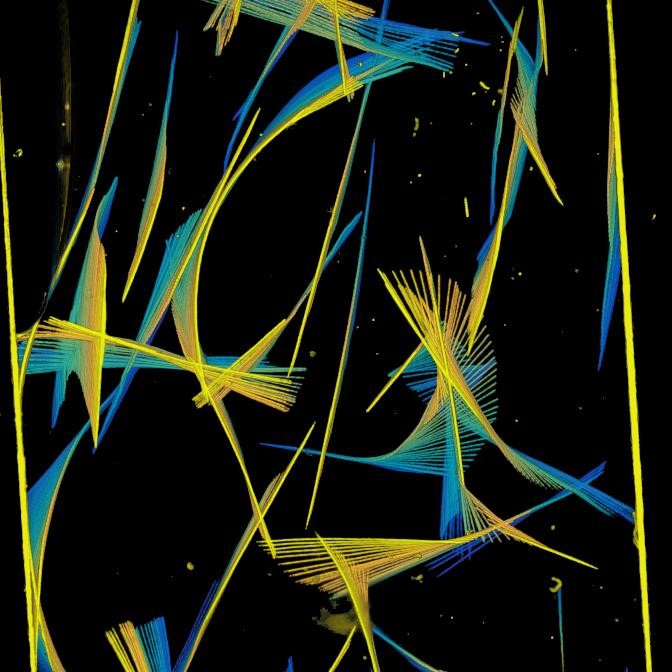Trichodesmium self-assembly
Written By
Category
Research
Posted On
August 1, 2012
Share This

Photosynthetic cyanobacteria of the genus Trichodesmium are responsible for 30–60% of global marine nitrogen fixation. This conversion of N2 into ammonia fertilizes photosynthesis by other phytoplankton in the ocean and is thereby responsible for the incorporation of 1.5 gigatonnes of carbon from CO2 into biomass, part of which is exported to the deep ocean and thus sequestered from the atmosphere for thousands of years. A fundamental, yet poorly understood aspect of Trichodesmium biology that strongly affects its distribution, metabolism and biogeochemical impact is its ability to self-assemble into aggregates composed of many multicellular filaments. Through lab observations, we have found that self-assembly and disassembly is rapid and uncoupled from growth. Assembly dynamics are further clearly dependent on the nutrient status of the cells, indicating a role of aggregation for Trichodesmium metabolism. We are now unravelling the mechanics of self-assembly in realistic open-ocean conditions, using time‐lapse video microscopy, quantitative image analysis, turbulence tank experiments, and direct numerical simulations. Integrating the results with ocean simulation data promises to enhance our ability to predict the biogeochemical impact of Trichodesmium in today’s and future oceans, and our understanding of its spatial distribution, migration behavior and bloom formation.
For more information, please contact Ulrike Pfreundt (pfreundt@ifu.baug.ethz.ch).